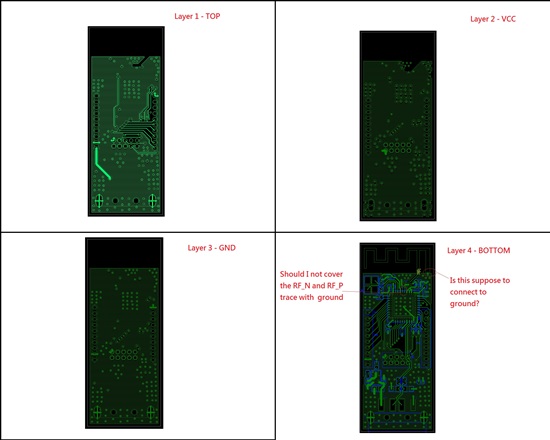Hi,
Currently we are working on a project using CC2540 as a USB dongle to connect to a PC to receive UART data from a device thru wireless BLE. However we encounter a problem when verifying the design.
We use the keyfob application program on a iPhone 4S/iPad Mini trying to connect to our custom made CC2540 USB dongle. When pressing scan key on the iPhone app, it will sometimes successfully discover device and show the "disconnect" button. However, most of the time the app will remain in the "connecting" stage.
It seems to me that it might be problem with RF antenna as I can successfully program and erase CC2540 using the CC debugger tool. So I assume that hardware on the digital side is ok.
I implemented the inverted F antenna as application note AN043 suggested. I've also attached my schematic and gerber. Any suggestion on how I can verify and confirm that it's an antenna problem will be welcome. Also please do help comment on my layout as this is my first time designing a RF board. 


